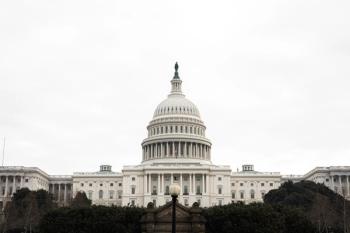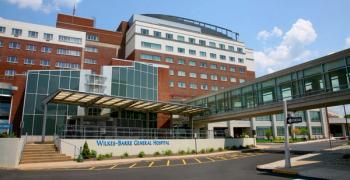
The Population Health Problems Facing Urban and Rural America
Philadelphia, Pennsylvania, and Johnstown, Pennsylvania, have unique and complex demographic situations that can complicate healthcare.
Photograph of downtown Johnstown, Pennsylvania, from the Johnstown Inclined Plane, 1995.
Population is always in flux: Over time, Americans moved from rural communities into cities, and then back out to suburbs, and now to cities again. Different populations have different health needs, and no one knows that better than David Nash, MD. He’s the dean of the Jefferson College of Population Health at Thomas Jefferson University—the first dedicated population health school in the country, he’ll proudly tell you.
The school, based in Philadelphia, also has a new research project far from its urban core. The 1889 Jefferson Center for Population Health in Johnstown, Pennsylvania, works with Conemaugh Health System to study health trends in that former industrial town, population 20,000, situated in Cambria County and near Somerset County, both decidedly rural areas.
At the recent Population Health Colloquium, Nash broke down the different migration-driven health challenges that Johnstown and Philadelphia face—and the ones they have in common.
In Philadelphia, a big problem is displacement through gentrification. Poverty is a dominant factor in community health, and the city has plenty of it: 25% of residents are below the poverty line, and more than half are in deep poverty. That’s what Nash calls “a euphemism for ‘can't put food on the table.’”
He said that food insecurity and deep poverty combine to form a “horrific social problem: there’s 400,000+ people and children going to bed hungry every night in America's founding city.”
Meanwhile, the city is gaining residents after a long period of population decline. But the 2 groups moving in are educated, high-earning millennials and older empty-nesters (“like yours truly,” Nash added). Exacerbating the nutrition issues faced by the poorer population is widespread displacement due to gentrification. Not only do many struggle to find food, they also struggle to find affordable housing.
On the rural side of things, there are a few key wrinkles. Nash said that the population in Johnstown and its surrounding areas have a lot of the same health problems as people in Philadelphia, like congestive heart failure, diabetes, and lung disease from smoking or pollutants—it’s in coal and steel country, or at least what was once.
But there are other problems that are more pronounced. Social isolation, which is frequently cited as a contributing factor to other health problems, and the opioid crisis, which has hit rural areas particularly hard.
“It turns out that dealers specifically move to rural communities where the drugs are available for a lot less money and they have a lot of buyers, so it’s a dreadful combination,” Nash said. “Drug abuse, depression, alcoholism, and all the diseases of despair are very important in those 2 counties.”
Another complicating trend is immigration. Most rural areas and small cities in the US have been losing population, though Nash said Johnstown’s drain has been stemmed slightly by an influx of immigrants. That, he said, creates problems of assimilation. Rural areas may be cheaper to live in, but they have less resources for those who don’t speak English well to lean on. If they struggle to get and maintain a good income, a lot of their needs—health included—end up falling on local, state, and federal government dollars.
“These are all, regrettably, population health issues,” he said. “If they can’t achieve these goals…we’ll be in a world of hurt.
This piece accompanies the cover story of our April print issue, "
Related Coverage:


















































